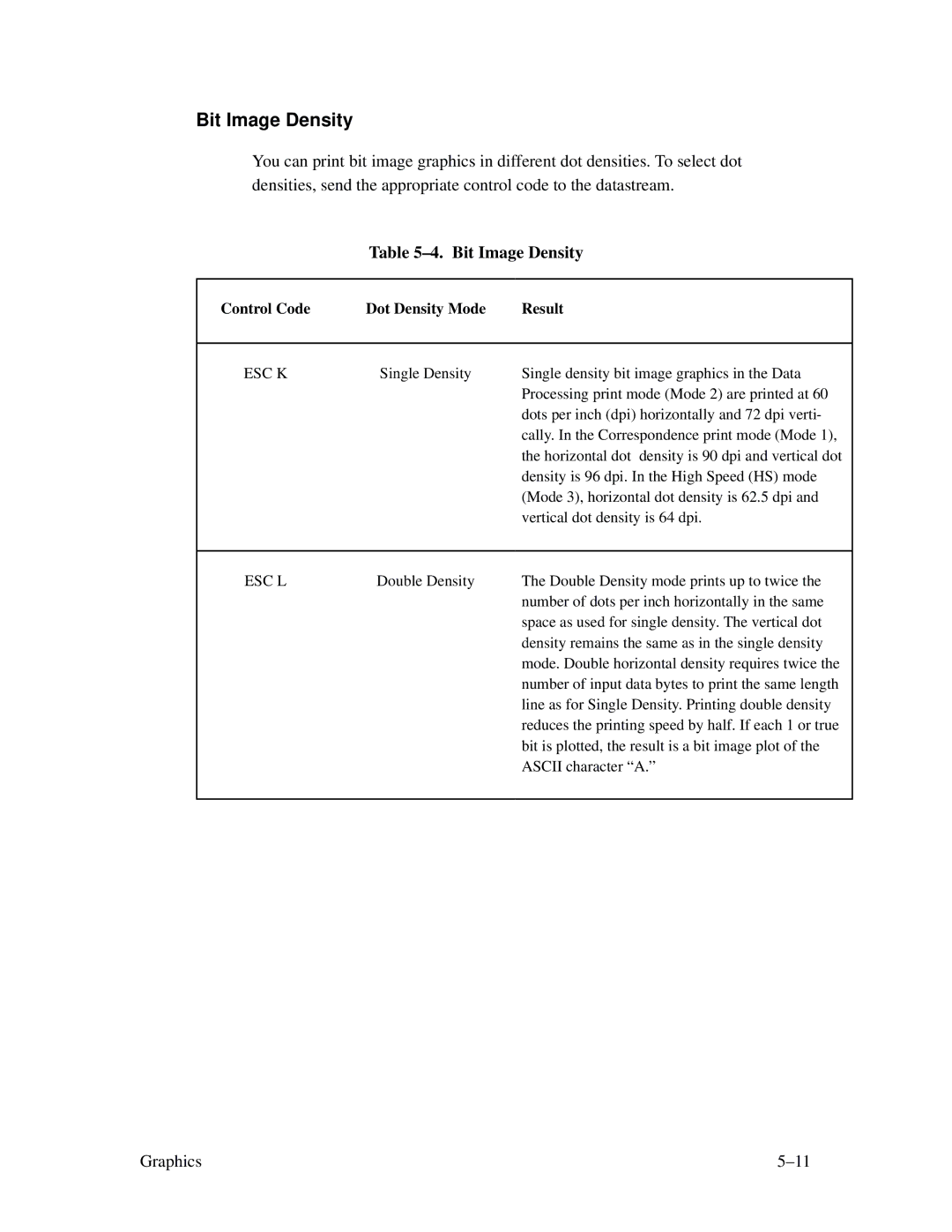Bit Image Density
You can print bit image graphics in different dot densities. To select dot densities, send the appropriate control code to the datastream.
Table 5–4. Bit Image Density
Control Code | Dot Density Mode | Result |
|
|
|
ESC K | Single Density | Single density bit image graphics in the Data |
|
| Processing print mode (Mode 2) are printed at 60 |
|
| dots per inch (dpi) horizontally and 72 dpi verti- |
|
| cally. In the Correspondence print mode (Mode 1), |
|
| the horizontal dot density is 90 dpi and vertical dot |
|
| density is 96 dpi. In the High Speed (HS) mode |
|
| (Mode 3), horizontal dot density is 62.5 dpi and |
|
| vertical dot density is 64 dpi. |
|
|
|
ESC L | Double Density | The Double Density mode prints up to twice the |
|
| number of dots per inch horizontally in the same |
|
| space as used for single density. The vertical dot |
|
| density remains the same as in the single density |
|
| mode. Double horizontal density requires twice the |
|
| number of input data bytes to print the same length |
|
| line as for Single Density. Printing double density |
|
| reduces the printing speed by half. If each 1 or true |
|
| bit is plotted, the result is a bit image plot of the |
|
| ASCII character “A.” |
|
|
|
Graphics |
